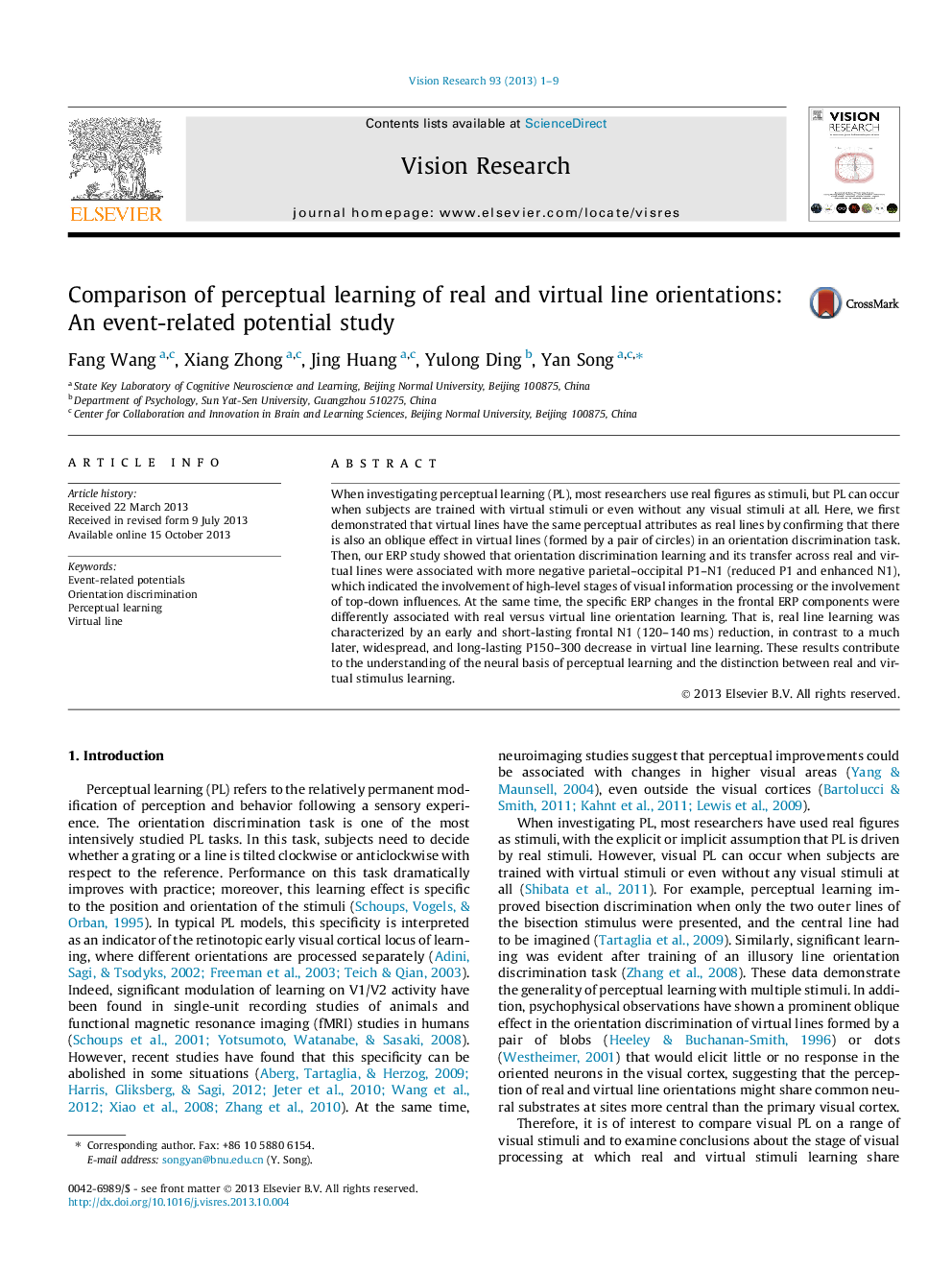| Article ID | Journal | Published Year | Pages | File Type |
|---|---|---|---|---|
| 6203522 | Vision Research | 2013 | 9 Pages |
â¢We compared virtual stimulus learning with real stimulus learning.â¢Behavioral improvement could transfer between real and virtual stimulus learning.â¢Changes over the parietal-occipital lobe were transferable between different stimuli.â¢Changes over the frontal lobe were specific to the trained stimuli.â¢Higher-level cortical processing was involved in virtual stimulus learning.
When investigating perceptual learning (PL), most researchers use real figures as stimuli, but PL can occur when subjects are trained with virtual stimuli or even without any visual stimuli at all. Here, we first demonstrated that virtual lines have the same perceptual attributes as real lines by confirming that there is also an oblique effect in virtual lines (formed by a pair of circles) in an orientation discrimination task. Then, our ERP study showed that orientation discrimination learning and its transfer across real and virtual lines were associated with more negative parietal-occipital P1-N1 (reduced P1 and enhanced N1), which indicated the involvement of high-level stages of visual information processing or the involvement of top-down influences. At the same time, the specific ERP changes in the frontal ERP components were differently associated with real versus virtual line orientation learning. That is, real line learning was characterized by an early and short-lasting frontal N1 (120-140Â ms) reduction, in contrast to a much later, widespread, and long-lasting P150-300 decrease in virtual line learning. These results contribute to the understanding of the neural basis of perceptual learning and the distinction between real and virtual stimulus learning.
